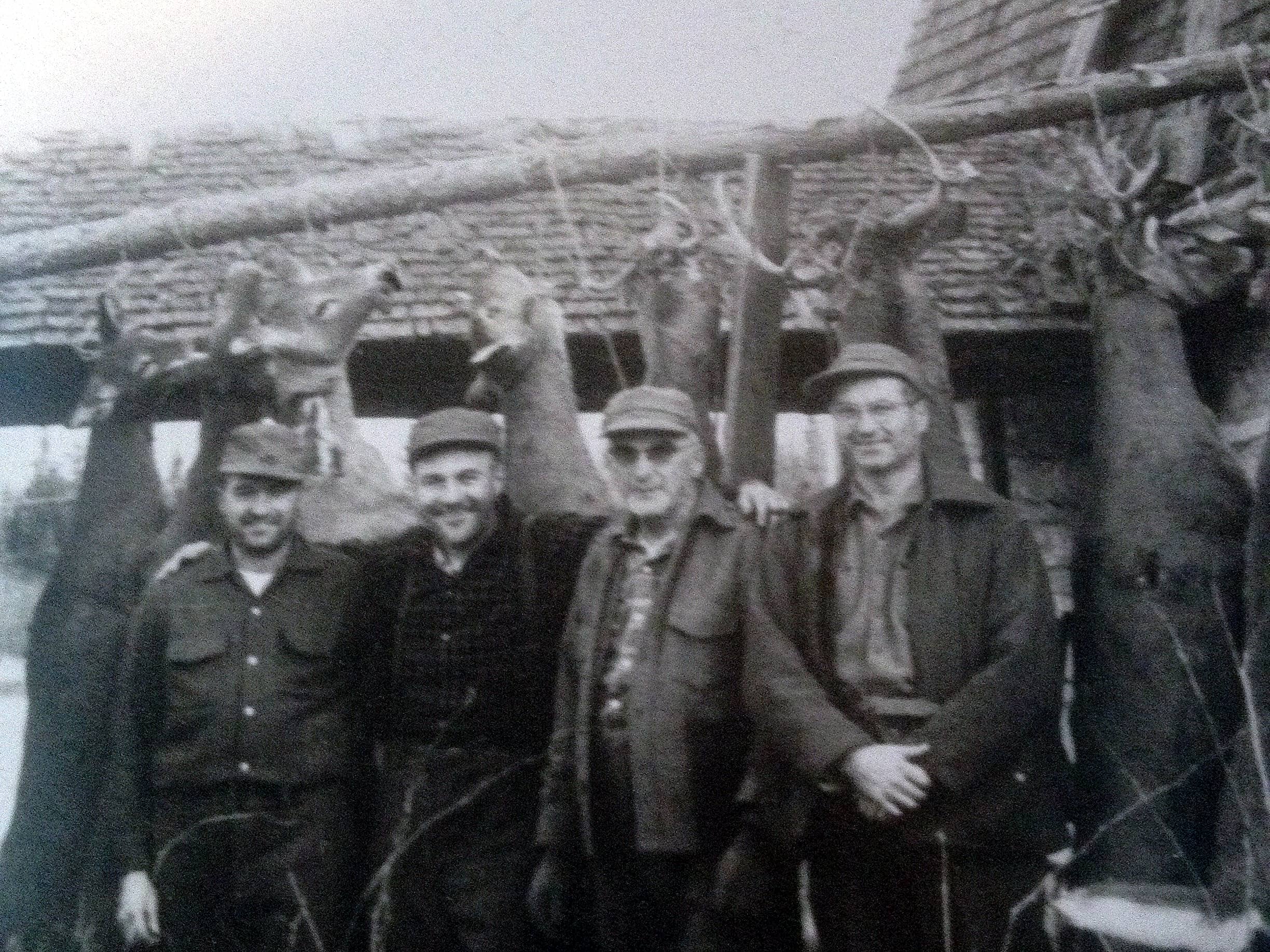
The Before Times. The tradition of hunting camp, here that of the author’s grandfather, was established long before the appearance of CWD in deer populations. DEO photo by John Bradley.
By John Bradley
It starts with countless hours of scouting, days sitting in the stand or miles of boot leather burned. It is late nights and cold early mornings with family and friends. It is moments when, if everything goes to plan, a shot rings out and the deer dies quickly. And it then is moments throughout the next year of healthy delicious meals. It’s a great tradition that the deer hunter engages in. One that our parents, grandparents, and great grandparents participated in. One that supports our economy, funds our fish and game departments, brings friends and families together and fills our freezers.
Hunters defend and protect that tradition year after year against assaults from animal rights activists, politicians who want to commercialize our wildlife, and other attacks seeking to weaken our hunting heritage. Hunters gladly step into the ring to defend the thing we love. Yet far fewer are willing to protect the health of the actual deer herd from threats that could just as easily weaken our hunting culture.
One such threat is chronic wasting disease (CWD). It threatens our deer populations and that very tradition that makes hunters circle the first weekend of November on their calendars. CWD belongs to the same family of diseases as scrapie in sheep and goats, “mad cow disease,” and even rare human diseases such as Creutzfeldt-Jakob disease. There isn’t a known cure for CWD, it’s still not fully clear how the disease is transmitted, and the disease continues to spread through deer, elk, and moose populations in North America. It’s a nasty disease, one that is always fatal to the animal. As of August of 2021, the Center for Disease Control has confirmed CWD cases in at least 25 states. Hunters, biologists, and wildlife agencies are concerned that the footprint of the disease will only continue to grow.
By threatening the existence of some of America’s most iconic big game species, CWD threatens our hunting tradition, as well as conservation funding from hunting licenses and hunters contributing to the economy through travel costs, lodging, and local purchases. Deer hunting is big business, contributing nearly $40 billion to the U.S. economy and roughly $5.5 billion in state and local tax revenue on an annual basis.
Yet, hunters have been slow to adopt practices to combat the spread of CWD. Hunters have often balked at proposals from management agencies to restrict baiting, to limit the transport of deer from CWD areas and to increase testing; often citing lack of evidence that those proposals work and that they are too burdensome for the hunter. But what is the alternative? CWD is not going to disappear on its own. Hunters should be looking to do all they can to stop the spread of CWD and give state and federal wildlife managers the support they need to tackle the disease.
Thankfully, a new bill would invest resources in understanding, preventing, and managing the spread of CWD across the United States. The bipartisan CWD Research and Management Act, introduced by Representatives Ron Kind (D-Wis.) and Glenn Thompson (R-Pa.), passed the House of Representatives earlier this month and will fund research on detecting and managing the spread of the disease along with funding state and tribal efforts to curb the spread. The bill authorizes $70 million annually from Fiscal Year 2022 through Fiscal Year 2028 for research and management of CWD, with the money to be split evenly between the two purposes.
If we are to save our deer herds and our hunting tradition, we need to go on the offensive against CWD. The act is a huge step in getting ahead of the disease in states where it is still limited. Hunters should support the bill and make sure their elected officials vote for this legislation. But that’s not enough, hunters also need to step up and make the voluntary efforts, like getting their deer tested after harvest, giving up hunting over bait, and deboning the meat out in the field, to help slow the spread of CWD. It’ll take some effort, some sacrifice, but the result will be deer and deer hunters in the field each fall. It’s a tradition unlike any other.
John Bradley is a Dakota Edge Outdoors contributing writer and the Executive Director of the North Dakota Wildlife Federation.
